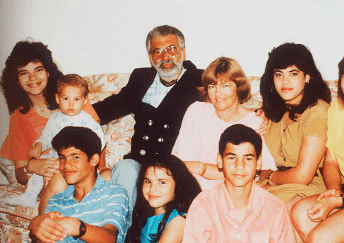Cultic Techniques for Changing Someone
In present-day thought-reform programs, there is an attack on the core self, the person’s central self-image. Attacking the inner person, the self, makes the person feel defective at his or her very core. In groups that use such methods, the motto is, Alter the self or perish. The purpose of this assault is to get the person to merge with and identify with the group or leader. The effect is that members become extremely anxious about self-worth and, at times, about their very existence. In such an environment, it is easy to bring on feelings of personal disintegration, or variations of an anxiety attack or identity crisis.
The central elements of a person that are threatened during this process are those that developed over the course of a person’s lifetime. In other words, each person’s “me,” which has been shaped since childhood. In life, a person learns to react to and cope with a variety of emotions, relationships, and events. Through this developmental process, a person adopts psychological defense mechanisms which she or he continues to use in perceiving and interpreting reality, and in dealing with life’s interactions. A systematic attack on the central self tears apart that person’s inner equilibrium and perception of reality. For some, the easiest way to reconstitute the self and obtain a new equilibrium is to identify with the aggressor and accept the ideology of the authority figure who has reduced the person to a state of profound confusion. In effect, the new ideology (psychological theory, spiritual system, political worldview, etc.) functions as a defense mechanism and protects the individual from having to further directly inspect emotions from the past which now appear to be overwhelming.
Recognizing this process of stripping a person’s psychological stability and defense mechanisms becomes crucial to understanding why some cults are able to cause such a rapid and dramatic acceptance of their ideology, as well as why membership in cults may produce psychological difficulties and other adjustment problems. The goal of a thought-reform program, then, is to change a human being at the very core so that she or he will believe in a certain ideology, doctrine, or leader and behave in a certain way. Once that is accomplished, compliance or obedience on the part of the group member (or intimate partner in the case of one-on-one cultic relationships) is usually guaranteed.
Conditions Needed to Create a Thought-Reform Environment
- Keep the person unaware that there is an agenda to control or change the person.
- Control time and physical environment (contacts, information).
- Create a sense of powerlessness, fear, and dependency.
- Suppress old behavior and attitudes.
- Instill new behavior and attitudes.
- Put forth a closed system of logic.
Tactics
Destabilize a person’s sense of self.Get the person to drastically reinterpret his or her life’s history and radically alter his or her worldview and accept a new version of reality and causality.
Develop in the person a dependence on the organization, and thereby turn the person into a deployable agent of the organization.





